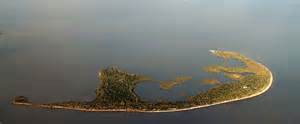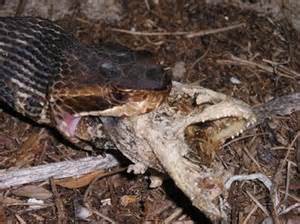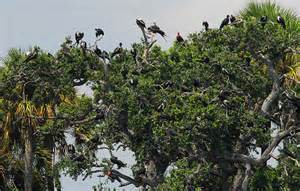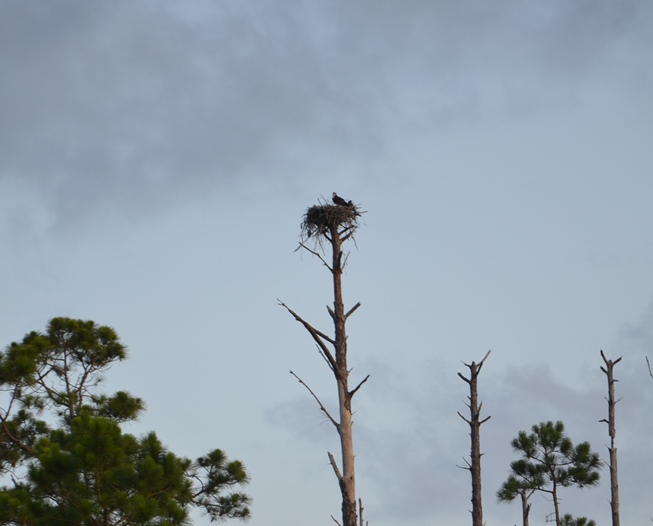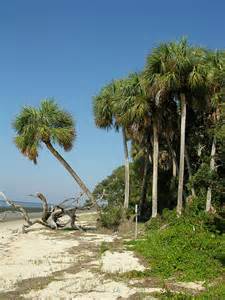
The Mystery on Seahorse Key
First let me explain that Seahorse Key is not in the Florida Panhandle but the story is interesting and a similar phenomena could occur here. Seahorse Key is an isolated island 3.6 miles southwest of Cedar Key in Florida’s Big Bend. There is a science lab owned and maintained by the University of Florida and Captain Kenny McCain on the island but can only reached by boat. Many forms of wildlife, particularly birds, seek out these isolate islands for nesting due to the lack of predators; and Seahorse Key is no exception. Another interesting point about this island is that it may have the highest density of cottonmouths in the state. Dr. Coleman Sheehy has been studying this population and estimates that there may be about 600 cottonmouths on the island. So what is the mystery?
Well we will first look back to last year and the nesting habits of the island’s birds. In 2014 Vic Doig of the U.S. Fish and Wildlife Service had logged seven different species of egrets, herons, cormorants, pelicans, and ibis nesting on the island. The number of nest per species varied from 100 to 5,000 with the white ibis producing the highest number. Dr. Sheehy surveys the cottonmouths by walking the shoreline and counting the number of snakes he encounters; which is typically around 30. The snakes and nesting birds are concentrated near Gardiners Point. Though the cottonmouths feed on rats they seem to rely on the fish that fall from the nests above.
As 2015 began the biologists noticed something different right off the bat. Though the birds were returning they were not returning in typical numbers, particularly the white ibis. These birds normally are the most abundant nesters on the island, but not this year. Dr. Peter Frederick, University of Florida’s Department of Wildlife Ecology and Conservation, did not seemed to alarmed by this knowing that white ibis are nomadic and do not stick with the same nesting locations for more than a few years. They tend to go where the food is most abundant. No mystery here… Then it happened…
Within a very short period of time, during the second week of April, all of the other birds began to leave. Researchers found the nests falling apart, no eggs or chicks within them, and hundreds of eggs on the ground. They also found the remains of 26 dead birds in the area. Where had they gone? What had happen?
Autopsied birds found no consistent cause of death. Most of the eggs on the ground had small holes indicating they were preyed upon by birds, most probably fish crows. However these birds are more opportunistic scavengers and would have fed on the eggs only after they had fallen from the nests. Researchers then discovered that many of the birds had relocated to nearby Snake Key. Though they had begun nesting there, fewer than half had done so. All seven species were found there but the number of nests had dropped from 100 – 5,000 to 50 – 600. Many of the birds were still missing. Where did they go? Better yet, why was Snake Key selected and Seahorse abandoned? And did the exodus of birds from Seahorse impact the snakes? The answer is… Yes. Dr. Sheehy’s survey found that the number of snakes encountered along the forest edge had dropped from 30 to 10. He noticed these snakes were thinner and he observed one cottonmouth consuming another, something he had not noticed before. The snakes had been impacted by the decline in nesting birds. What had happened on Seahorse Key?
One idea was put forth by Dr. Sheehy. He had noticed an increase in the number of raccoons on the island. Again, these isolated islands are selected for by nesting birds because of the lack of such predators and Dr. Harvey Lillywhite indicated that the typical number of raccoons on the island is zero. But Dr. Sheehy and Captain McCain had trapped and relocated seven raccoons earlier this summer. This suggests that a large group (large for this island) had found their way to Seahorse Key. Dr. Sheehy suggests that the cause of the movement of birds were the raccoons. There is no evidence of them attacking the birds but they believe the shear presence of the animals was enough for the birds to relocate. However Dr. Fredrick points out that (a) there was little evidence of the raccoons preying on the fallen eggs and (b) he could not find track or scat evidence of more than one or two raccoons on the island during his initial survey after the birds left. He is not so sure the raccoons were the cause.
Then there is the question… Where did the seven raccoons trapped come from? One suggestion was that they were released by locals. This was based on the fact that raccoons captured were well fed and had a mild temperament, not what you typically encounter with trapped raccoons from the wild. Later there was a confirmed report of a local who does take in orphaned raccoons, raises them, and releases them; they could have released some on Seahorse Key – but this has not been confirmed.
So right now this mystery remains unsolved. But the story does indicate the types of problems that can occur when humans relocate animals to habitats they do not typically live in. It takes years for Mother Nature to develop a balance only to have it quickly fall apart by the human release of animals we wish to move or that we think will do better in another location.
You can read more on this story at:
http://fieldguide.blogs.gainesville.com/427/amysteryatseahorsekey/
http://fieldguide.blogs.gainesville.com/450/a-mystery-at-seahorse-key-part-2/

